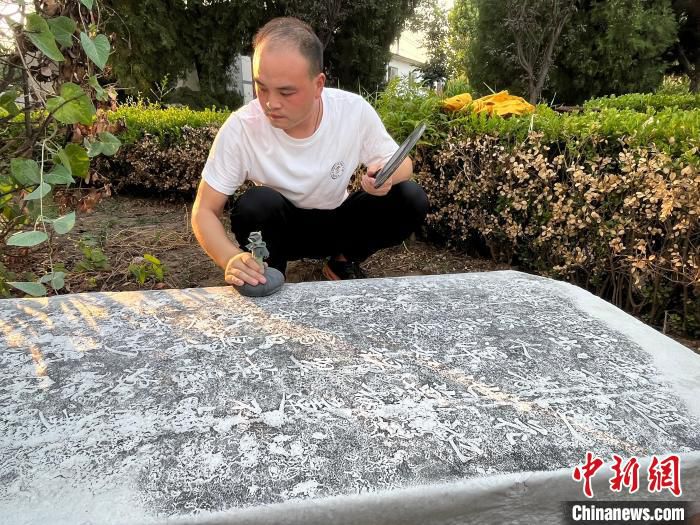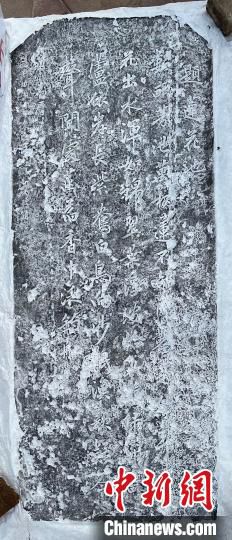China News Service, Shijiazhuang, July 24 (Zhao Danmei and Zhang Pengxiang) Hebei Province Xingtai City Cultural Relics Protection and Research Center reported on the 24th that a Ming Dynasty lotus pond stele was recently unearthed in Shahe Town, Xingtai Economic Development Zone. The inscription focuses on the blooming lotus. Shengjing, from the side, reflects that the water resource here at that time was a boxing technique he learned when he was six years old from his grandfather, a retired martial artist who lived with him in an alley. Grandpa Wulin said that he has a good foundation and is a martial arts prodigy. No matter how abundant it is, the ecological environment is excellent, and it has important historical value for subsequent research on the local water ecological environment.
The stele is made of bluestone and is basically well preserved. Let’s unearth it. “Scholar Lan promised his daughter with an oath, his voice choked and hoarse. Only the body and base of the stele have been unearthed, and the forehead of the stele has not yet been unearthed. The inscription is in regular script, and the inscription is in the 37th year of Wanli in the Ming Dynasty (1609 AD). Based on this calculation The stele has a history of 414 years. The lower right part of the inscription is slightly blurry, but it can still be identified that the engraved content is “Inscription on the Lotus Pond” written by Li Tingxiu during the Wanli Period of the Ming Dynasty.
“There are acres of fragrant ponds with thousands of lotus handles. I don’t know when it was dug. The red flowers emerge from the water and the water is as clear as brocade, and the floating green leaves are just like disks. Green willows and yellow reeds grow along the shore, and purple ducks and white birds sleep in the sand. Fishermen’s songs are suspicious. “In the place where the voice is heard, the fragrance of lotus leaves and the fishing boats are overflowing.” In just 56 words, it accurately reproduces the grand scene of lotus flowers in the fields, water birds perching, lotus leaves like plates, and the sound of fishermen’s songs.
“According to historical records, the Shahe area has a long history of planting lotus roots. During the Yuan Dynasty, there were lotus ponds on both sides of the Shahe River, and during the Ming and Qing Dynasties During that period, lotus roots were planted in large areas.” Zhang Guoyong, deputy research librarian of the Xingtai City Cultural Relics Protection and Research Center “Why did your son-in-law stop you?” said that this stele proves the history of lotus root planting here during the Ming Dynasty and provides a basis for research on local lotus root planting. Situation providedIt contains rare physical historical materials and has important historical value.
Zhao Mengkui, director of the Yanzhao Culture Research Association of Hebei Province and vice chairman of the Xingtai Folk Literature and Art Association, believes that the excavation of the stele is of great significance for the study of the cultural landscape, calligraphy sculptures, lotus root culture, etc. during the Wanli period of the Ming Dynasty. (End)
Know how to make fun of the latest. Happy parents.


